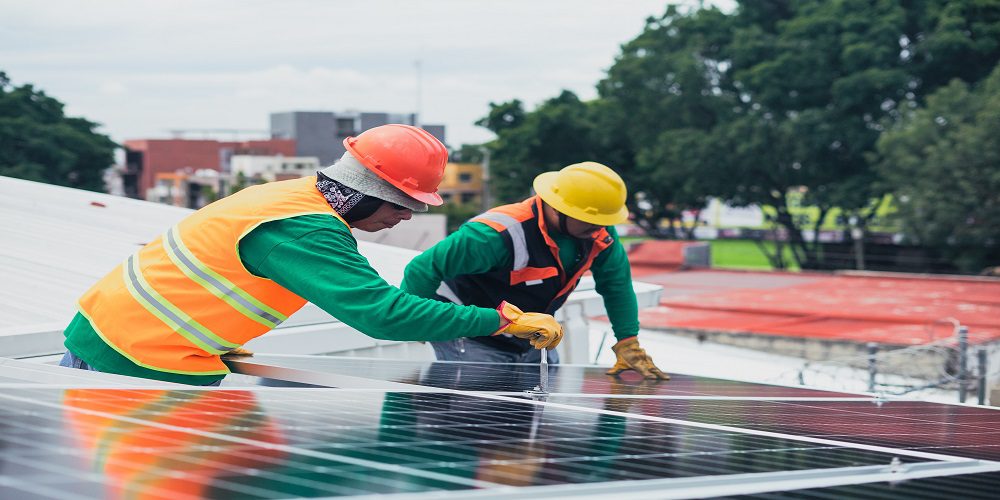Are you ready to dive into a world of unlimited possibilities, where clean energy reigns supreme and environmental sustainability is the driving force behind every government’s decision? Well, get your seatbelts fastened because today we are delving deep into the realm of electrification and renewable projects! In this exhilarating blog post, we will explore why governments worldwide should embrace change by investing in these cutting-edge initiatives. From harnessing the immense power of sun and wind to transforming our transportation systems, join us on this electrifying journey as we unravel the enormous benefits that await us all. Prepare yourself for a mind-blowing ride filled with innovation, progress, and a future brighter than ever before.
The Benefits of Electrification
Government should embrace change and invest in electrification projects as this will not only help the environment but also create numerous economic benefits. Electrification can improve air quality, provide jobs, reduce dependency on oil and other fossil fuels, and boost the economy overall.
Air Quality: Electrification can improve air quality by reducing dependency on oil and other fossil fuels. This can combat climate change and respiratory issues caused by pollution.
Jobs: Electrification can generate jobs in a number of sectors, such as manufacturing, construction, and installers. This creates wealth which can be distributed throughout society through consumer spending and taxes.
Reduced Dependence on Oil & Other Fossil Fuels: Electrification also reduces dependence on oil and other fossil fuels by converting vehicles to electricity or fuel cells. Vehicle emissions are reduced, which helps decrease pollution levels. This has environmental benefits as well as economic ones.
Boost to the Economy: Electrification projects have a multiplier effect on the economy due to increased investment in equipment, materials, and infrastructure. This helps create more jobs, higher incomes, and increased demand for goods and services.
The Problem with Electricity
Electricity is one of the most important and ubiquitous forms of energy use. It provides lighting, heating, cooling, communication, transportation and hundreds of other everyday products and services. Electric power plants convert natural gas or oil into electricity to run our appliances and most industrial processes.
However, electricity is not sustainable in the long term. The problem with electricity is that it creates CO2 emissions when it’s generated and used. Electricity generation releases greenhouse gases like carbon dioxide when coal is burned to produce heat energy (thermal energy converted into work). Emissions from factories making electric equipment also contribute to climate change. For every kWh of electricity produced from a renewable resource like solar or wind, there is around 1-2 kWh emitted due to unavoidable chemistry and technology issues with these technologies.
In fact, according to the Worldwatch Institute, if all countries followed their commitments under the Paris Agreement (to reduce greenhouse gas emissions), ending global reliance on fossil fuels by mid-century would require replacing 78 percent of current primary energy with renewables by 2040 – an almost inconceivable task!
Former US presidential candidate Bernie Sanders has called for an end to fossil fuel subsidies which amount to over $500 billion per year worldwide, promoting investments in clean energy as a more effective way of combating climate change [1]. In many cases where renewables are cost competitive with traditional sources of electricity like coal or oil, government subsidies help encourage the adoption of renewable energy instead. Subsidies provide financial assistance for renewable energy technologies, which can make them more accessible and affordable. However, they also have the potential to distort market signals, punish clean energy providers and undermine the competitiveness of renewable technology.
Electricity is a valuable resource, but it’s not sustainable in the long term. Electricity generation releases greenhouse gases like carbon dioxide when it’s generated and used.
Renewable Energy: What it is and Why we need it
Renewable energy is emissions-free energy that comes from natural resources like sun, wind, waves and tides. Energy from renewable sources doesn’t produce any pollution and can help reduce our reliance on fossil fuels.
Governments need to make a commitment to renewables if we’re going to have a successful future, says Lynne Kiesel of the Institute for Local Self Reliance. “There’s lots of evidence that when communities take ownership of their own power systems, they do better,” she says.
renewables are becoming more affordable and accessible: Solar panels have dropped in price by more than 75% since 2010; offshore wind has fallen by 88% in the past five years; and batteries are becoming cheaper by the year. With clean energy options becoming more available and affordable, it’s important for governments to invest in Renewables so everyone has access to them.
In China, rooftop solar PV capacity reached 74 GW at the end of 2016 – enough to power 24 million homes – making it the world’s largest installer of solar PV capacity. Chile now has the world’s highest share of grid-connected solar photovoltaic (PV) capacity after having surpassed Germany in 2016.* Similarly, India was ranked first among developing countries with respect to installed solar PV capacity in 2017 despite having only 3% of global population.
Why Governments should Invest in Electrification and Renewable Projects
Electricity is one of the most important components in modern society. It enables communication, transportation, medical care and other essential services. It’s also a key part of the global clean energy market, which is expected to reach $1 trillion by 2040.
Renewable energy is one of the most important ways to reduce emissions and combat climate change. It has the potential to provide more than half of all electricity needs by 2050, as well as provide jobs and promote economic growth.
There are many reasons why governments should invest in electricification and renewable projects. They help reduce emissions, improve air quality and promote economic growth. Here are five reasons why:
1) Emissions Reduction: Electric vehicles are cleaner cars than gasoline or diesel vehicles. Electricity production also produces no harmful exhaust fumes or pollutants. Governments can encourage more people to switch to electric vehicles through subsidies and other programs, resulting in large emissions reductions over time.
2) Cost Savings: Electrification will result in cost savings for businesses and consumers because it will save money on energy bills. Renewable energy also has the potential to generate power at a lower cost than traditional sources such as fossil fuels. This could lead to significant cost savings for governments too if they invest in renewables instead of fossil fuels.
3) Jobs Creation: Electrification and renewable projects create jobs in installation, manufacturing, maintenance and other associated industries. They can also support related businesses such as software development and design companies. In some cases, renewables can even create jobs in traditional fossil fuel industries.
4) Climate Change Prevention: Electric Vehicles and Renewable Energy have the potential to reduce greenhouse gas emissions. This is important because carbon dioxide is the main component of climate change. By reducing emissions, electric vehicles and renewable energy projects can help prevent significant global warming.
5) Economic Growth: Electricity is one of the most important components in the modern economy. Electrification and renewable projects promote economic growth by creating new jobs, encouraging innovation and enhancing overall productivity.
Conclusion
Governments should invest in electrification and renewable projects for many reasons, not the least of which is that they are good for the environment. They also create jobs, bolster economic development, and improve public health. By embracing these innovative technologies, governments can help secure their citizens’ future while decreasing reliance on fossil fuels and contributing to a cleaner energy landscape.

































